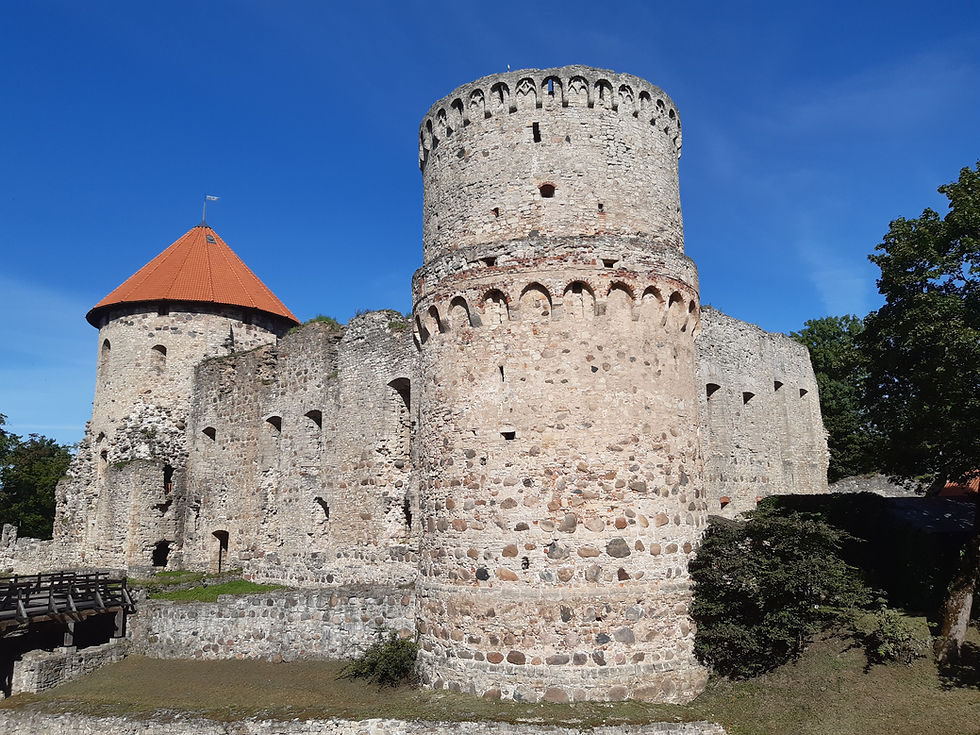The Battle on the Ice
- byrneside
- Oct 10
- 3 min read

The Battle of Lake Peipus, fought on April 5, 1242, is one of the most famous clashes of the Middle Ages – remembered not only for its setting on a frozen lake but also for what it came to symbolise: the meeting of East and West, Catholic and Orthodox, crusader ambition and native resistance. Known as the “Battle on the Ice”, it saw Prince Alexander Nevsky of Novgorod face the crusading forces of the Teutonic Knights and their Livonian allies in a struggle that helped define the balance of power in the medieval Baltic.
In the early thirteenth century, the Baltic was a frontier between worlds. German and Danish crusaders, sanctioned by the papacy, were expanding into the pagan lands of Livonia and Estonia under the banner of the Northern Crusades. The Livonian Order, a branch of the Teutonic Knights, had carved out a network of fortresses and bishoprics around Riga and Dorpat, subduing local tribes and establishing Christian rule. Yet this conquest was as much about trade and power as it was about faith. To the east, the Republic of Novgorod – an Orthodox city-state controlling vital trade routes to the Baltic, watched uneasily as the crusaders drew closer to its borders.
Tension grew as the Germans pushed eastward. In 1240, a Swedish crusading force attempted to land at the mouth of the Neva River, only to be repelled by a young Novgorodian prince, Alexander Yaroslavich, whose victory earned him the name Nevsky. But his respite was short. In 1241, the Livonian Order seized the fortress of Pskov and installed a German garrison, signalling that the expansion would not stop at pagan lands. To Novgorod, this was not a religious mission – it was invasion.
Alexander returned from political exile to lead the response. Rallying the Novgorodian militia and his own retainers, the druzhina, he recaptured Pskov and expelled the occupiers. The Livonian Order, led by Bishop Hermann of Dorpat, called on reinforcements from the Teutonic Knights and Danish vassals in Estonia to strike back. Their forces advanced east to challenge Alexander’s army, and the two sides met on the frozen southern shore of Lake Peipus in early April 1242.
The armies were small but determined. The crusader host likely numbered a few hundred men, including perhaps eighty heavily armoured knights, supported by infantry and Estonian auxiliaries. Alexander’s force was larger but less disciplined, made up of his druzhina, mounted troops, and the Novgorodian militia, many of them lightly armed foot soldiers familiar with the forests and marshes of the north.
The morning of April 5 was clear and cold. Alexander deployed his army in a wide, shallow arc along the lake shore, hoping to draw the crusaders inward. The Teutonic commander, confident in his knights’ superiority, ordered a wedge formation aimed at breaking the Russian centre. The thunder of hooves echoed across the ice as the armoured charge struck with crushing force, scattering the front ranks of Novgorodian infantry. For a moment, it seemed that the battle might end in a swift German victory.
But as the knights drove deeper into the Russian line, their momentum faltered. The slippery ice and snow slowed their horses, and the formation began to lose cohesion. Alexander’s wings closed in from both sides, surrounding the wedge. His druzhina attacked the flanks, while infantry pressed from the front, hacking at the knights’ legs and unhorsing them. What began as a charge became chaos – a melee of fought on treacherous ice.
Chroniclers claimed that the lake cracked beneath the fighters, that men and horses plunged into the freezing water. Whether true or poetic exaggeration, the image endures: invaders consumed by the very ground they sought to conquer. By midday, the crusader line broke. The surviving knights and foot soldiers fled toward Dorpat, pursued by Novgorodian cavalry for miles across the frozen landscape. The Germans and Danes suffered heavy losses, with many captured or slain.
The result was decisive. The crusaders’ advance into Russian territory ended abruptly, and within weeks a truce was agreed. Pskov remained in Novgorodian hands, and the border stabilised near the Narva River. The Teutonic and Livonian orders would continue to dominate the Baltic for centuries, but they never again attempted to subdue the lands of Rus’. For Alexander Nevsky, the victory secured his reputation as the defender of Orthodoxy and the protector of Novgorod’s independence.
In the years that followed, Alexander proved as shrewd in politics as he was on the battlefield. Recognising the futility of open resistance against the Mongol Empire that ruled over much of Rus’, he made peace with the khans while keeping Novgorod free from destruction. His ability to balance defiance with diplomacy ensured the survival of his city when many others were crushed. In 1547, the Russian Orthodox Church canonised him as Saint Alexander Nevsky, and his name became synonymous with piety, courage, and patriotism.




Comments